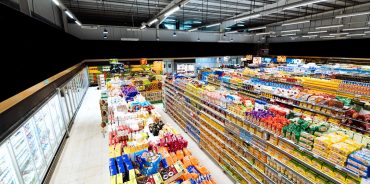Making your customers fall in love all over again
Valentine’s Day is upon us, and as well as presenting retailers with a considerable commercial opportunity, it also serves as the perfect time for them to re-evaluate their relationships with customers. Is the passion still there? Or is it time to try and reignite the spark? In this blog, we look at five ways that you can make your customers fall in love with you all over again.
1. Freshen things up
Have you reviewed your customer contact data recently? According to one recent white paper, 30% of data becomes inaccurate each year[1]. With the reliability of third party data declining and privacy laws becoming stricter, it's time to spring clean your first-party customer dataset.
How?
- Send an annual 'update your details' campaign to customers, prioritising those who are most loyal or engaged with your brand. Put a double opt-in mechanism in place to validate the details provided and offer a small incentive for doing so.
- Ensure that opt in and opt out changes are automatically updated in your database and checked within your CRM system before each communication is sent out.
- Ensure that you have stringent data security protocols in place, to protect customers’ Personally Identifiable Information.
2. Get up close and personal
Personalisation is no longer a nice-to-have; it’s a basic requirement for engaging profitably and meaningfully with your customers. Over three quarters of customers are more likely to recommend, purchase, and repurchase from a brand that delivered personalised experiences to them, according to one recent report[2]. If you haven’t already, 2023 is the year to get personalisation right.
How?
- Implement the right tools and technologies to enable personalised campaigns and offers at scale.
- Ensure that your loyalty program rewards and engages customers while gathering the data you need to deliver improved personalisation. See our 2022 Loyalty report for more.
- Prioritise customer insights and understanding in order to identify opportunities and drive lifecycle (retention, growth, win back) strategies.
- Procure the science and analytics capabilities needed to align the right offers and products with the right customers.
- Plan out your roadmap for moving from non-personalised or segmented to 1-to-1 personalisation – and expect this to include multiple functions, from IT and marketing to operations and commercial teams.
3. Be prepared to change
Which customer engagement strategies worked so well last year that you’ll continue to apply them in 2023? Which were inconclusive and should be revisited? Which ones need to be ditched? Having a robust, hypothesis-based Test and Learn approach can help you understand which techniques resonate best with customers.
How?
- Test one variable at a time to ensure an unbiased outcome. That variable could be a different discount mechanic, discount value, creative look and feel, subject line, or something else.
- Apply A/B testing or Champion/Challenger logic for statistically significant test results. For example, send 50% of customers a new email creative, send the other 50% your current one, and track the contrasting open and click through rates.
- Conduct more than one test for the same variable. In dunnhumby's experience, we recommend testing the same variable (i.e., a different discount value), for at least 2-3 months. This repeated testing accounts for changes in customer behaviour, seasonality, and other external factors.
4. Show a little understanding
During the pandemic, many retailers raced to ramp up their ecommerce offering and launch quick delivery services. As we’ve discussed before, however, building a profitable ecommerce business is more of a marathon than a sprint. Understanding is key; focusing on customer needs can help you drive loyalty, baskets, and repeat visits.
How?
- Help them find what they need. Besides a sensible taxonomy and strong search functionality, a personalised quick start shopping list based on items your customer usually buys in store helps them shop faster and creates a positive, lasting impression.
- Help them save time. It’s easy to forget something when shopping online, so having recommendations at checkout for commonly bought items that aren’t in the basket can be helpful to avoid another trip. A substitutes system that recommends next-best alternatives for out-of-stocks is also critical.
- Inspire them. Yes, grocery shopping is a chore, but it can still be exciting to discover new products and brands. Make sure that your ecommerce site is an extension of your physical stores by including relevant organic or supplier-sponsored content for seasonal ranges and new product launches.
5. Give the customer what they need
Okay, so this one isn’t specifically about engaging your customers – but it does have a huge bearing on your ability to serve them effectively.
We’re all feeling the pinch right now, both personally and professionally. Soaring inflation and the rising cost of living have led many retailers to employ heavy discounting tactics to retain customer share. This approach isn’t sustainable, of course, meaning that retailers need to prioritise effective operations and secondary revenue streams more than ever.
How?
- Evaluate your promotional ROI. Knowing which promotions work best (by product, customer, and time) is critical in cutting back on ineffective, margin-dilutive activities. Ensure your promotions are aligned to customer buying patterns and price sensitivity.
- Double down on personalised promotions. With suppliers and brands under pressure to prevent customers from switching to the competition, a personalised offers program gives them the ability to target high-intent customers on digital channels while generating incremental revenues for you.
- Unlock new revenue streams with retail media. Supplier participation extends beyond just promotions, of course. With a sizeable, addressable audience, you’re in prime position to monetise both your data and media inventory. Maximising that opportunity means packaging up data-driven opportunities that can help your suppliers hit their objectives across the marketing funnel.
No two grocery businesses are the same. While the ideas above might provide some fun inspiration, nothing matters more than developing a true understanding of your own customers and how you can best meet their needs.
References
- McKinsey: Value of Getting Personalisation Right or Wrong is Multiplying 2021 - https://www.mckinsey.com/capabilities/growth-marketing-and-sales/our-insights/the-value-of-getting-personalization-right-or-wrong-is-multiplying
- Dunnhumby ecommerce RPI 2022 - https://resources.dunnhumby.com/dunnhumby-quarterly-june-2022/ecommerce-retailer-preference-index-rpi OR https://resources.dunnhumby.com/dunnhumby-quarterly-june-2022/
- Dunnhumby USA Inflation RPI 2022
- Progressive Grocer: https://progressivegrocer.com/inmar-driving-brand-loyalty-during-inflation?from=gate
- McKinsey: Commerce Media – The New Force Transforming Advertising 2022 - https://www.mckinsey.com/capabilities/growth-marketing-and-sales/our-insights/commerce-media-the-new-force-transforming-advertising
- [1] https://cheetahdigital.com/wp-content/uploads/DTC-Relationships-in-CPG-1.pdf
- [2] The value of getting personalization right—or wrong—is multiplying – McKinsey, 12th November 2021
Inflation Discovery & Plan
dunnhumby Inflation Discovery & Plan enables retailers to identify the priority actions they can take and the key areas to absorb inflation to deliver to the changing needs of their customers, while creating savings to protect their margin.
Get in touchTOPICS
RELATED PRODUCTS
A look at dunnhumby’s unique Customer Data Science, which is at the core of everything we do.
Data Science solutionsThe latest insights from our experts around the world
The factors underpinning AI’s success
Learning from the leaders: lessons in best practice from Europe’s winning hypermarkets
In-house vs. outsource: what’s the right way to run your retail media business?




